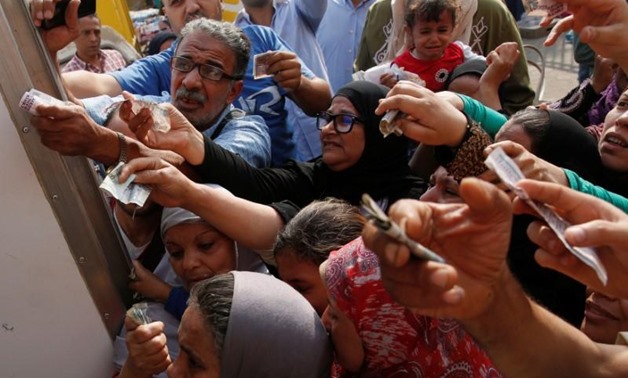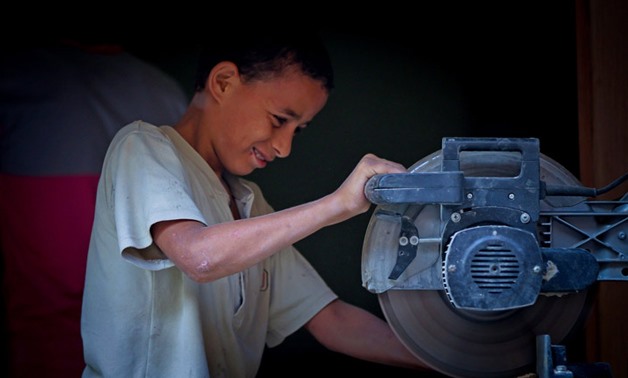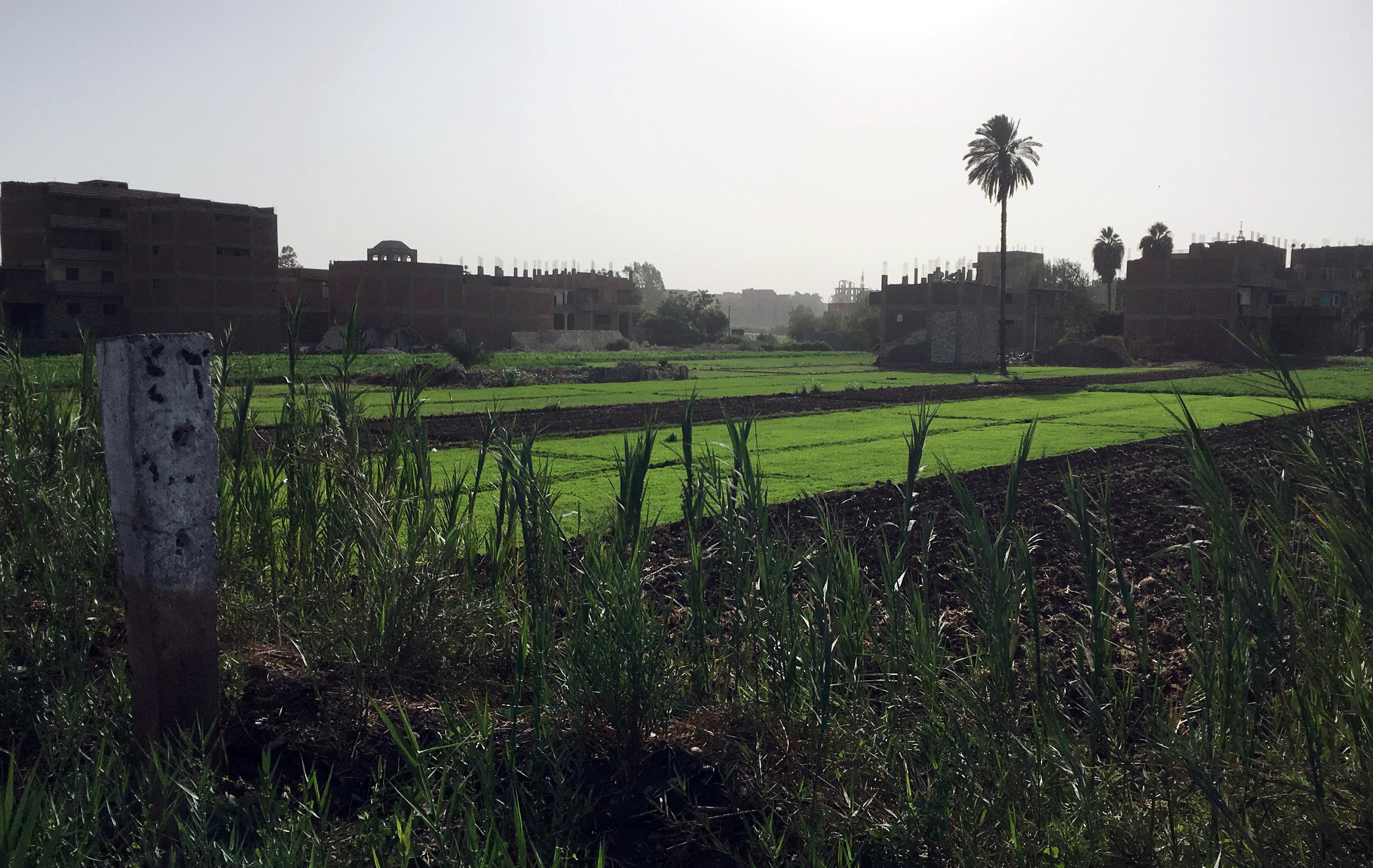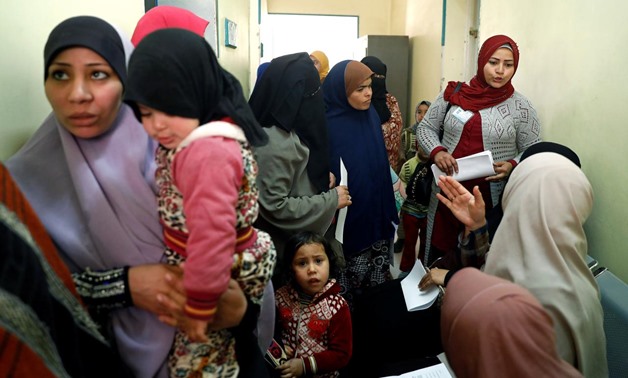CAIRO - 15 June 2019: When you’re born into money, it’s easy to make more of it; you’re born with adequate financial resources, the right social connections and you get the best education to top if off. Poverty, on the other hand, often breeds more poverty.
The poverty trap is a situation where the poor do not have access to capital be it education, healthcare, job opportunities or credit to escape poverty, and the cycle extends to future generations.
Based on human development measures, Egypt is one of the countries where certain social segments are caught in the poverty trap, often due to overpopulation. UNICEF estimates the poverty rate in Egypt to be at around 27.8% in 2015, this translates into tens of millions of children having no access to healthcare, clean drinking water and secondary education. The poverty line in 2015 was set at an income of below LE 482 monthly, but the figure is projected to rise to LE 800 to reflect the currency’s new value after the float, compared to an international rate of around LE 1,000. Moreover, the new, adjusted poverty rate is estimated at around 35%, according to economics professor Heba El Laithy. The rate in some areas are even higher; numbers in Upper Egypt reach 50%, according to official figures. A 2017 report by Egypt’s official statistics agency CAPMAS shows that 57.8% of the population live in rural areas, where poverty rates tends to be higher.

Egyptians gather to buy subsidized sugar from a government truck after a sugar shortage in retail stores across the country in Cairo, Egypt, October 14, 2016. REUTERS/Amr Abdallah Dalsh
The first-ever Human Development Index (HDI) was published through the United Nations Development Programme (UNDP) in 1990 by economist Mahbub ul Haq, founder of the human development concept in the 1970s. The index consists of three elements: education, health, and income. The first is measured by calculating the expected years of schooling for school-age children and the average years of schooling in the adult population. The second consists of life expectancy at birth. And, the last concerns the Gross National Income (GNI) per capita.
To address the poverty trap, the state needs to address all three fronts. As Rami Galal, an assistant professor of economics at the American University in Cairo, explains, “Overcoming poverty traps requires economic growth that benefits vulnerable groups in society.” On the supply side, the public sector can provide people with the necessary human capital investments in education and health, with a focus on targeting those worst off. On the demand side, the government can stimulate the economy and facilitate the expansion of businesses by investing in infrastructure like roads, power, water, and sanitation, Galal adds.
“Such policies can also target sectors or geographic areas that are the most deprived. In addition to these kinds of concrete policies, reforms should aim at improving public institutions to ensure the efficient and fair allocation of resources. These include improving public administration, the judicial system, and security,” Galal explains.
Education
Education is essential to avoid falling into the poverty trap, and is one means to get out of it. But overpopulation means classrooms are overcrowded and the quality of education suffers. Children also often drop out of school and become victims of child labor to help their families financially.

A child works in carpenter's workshop in Fayoum governorate- Hussein Tallal
The latest report by CAPMAS, released in September, indicates that 7.3% of Egyptians between the ages of 6 and 20 are either drop-outs or have never gone to school. The top three reasons are the person’s desire (37.2%), the family’s desire (18.9%), and financial issues (17.8%).
Lacking facilities, overcrowded schools and inadequate teaching methods, as well as family and financial pressure are often the major reasons behind a child’s desire to drop out of school. The top five governorates in the number of dropouts—Giza, Sohag, Aswan, Beheira, and Assiut—include three cities in Upper Egypt, where the poverty rate surpasses all other regions in the country. In fact, Sohag and Assiut have the highest poverty rate in the country, standing at 66%, according to a 2016 report by CAPMAS.
Overpopulation
CAPMAS revealed in March 2018 that the number of public schools had reached 45,279, serving 18.6 million students. That entails each school is attended by 411 students on average. In a press interview, Education Minister Tarek Shawky admitted that overpopulation is one of the obstacles facing educational development.
To address the overpopulation crisis, the Ministry of Social Solidarity launched a campaign called “Two Are Enough” targeting 1.148 million families enrolled in the monetary subsidies program Takafol wi Karama (Solidarity and Dignity). Their locale is in the governorates of Aswan, Luxor, Qena (Egypt’s third-poorest governorate), Assiut, Menya, Beni Sueif, Fayoum, Giza, and Beheira. Those nine governorates include the five with the highest number of drop-outs. The program aims to raise awareness about family planning and make contraception means available through NGOs.
“Targeting rural areas with population policy makes a great deal of sense, as they have higher birth rates than urban ones because humans are considered assets rather than liabilities. The impact would be solid,” associate professor of economics at AUC John W. Salevurakis clarifies. “The rich get richer and the poor get children,” former Assistant Secretary General of the UN World Food Conference and economics professor at AUC Adel Beshai says. He explains that Egyptians often bear more children because they believe it would make them more satisfied with their living conditions so they have children. Socially, the expectation is to have a boy, and many women bear multiple, consecutive pregnancies if their older children are girls.
Beshai argues that rural poverty does not have a significant negative impact on the economy. For instance, rural families who used to make their children work in the fields—perhaps harvesting some crops—do not represent a problem as they are able to survive on subsistence economy and be productive. “If these children cease working in the agrarian sector and drop out of school, there is a huge problem as they would be concentrated in the informal crafts sector in urban areas,” Beshai argues.
Instead, he suggests that a key solution for overpopulation is encouraging women only to get married later in life. “Social ideas and traditions pertinent to marriage age should be rectified. Getting married for young women is equivalent to earning a PhD in Egyptian social norms. That is catastrophic. Most of these marriages even end in divorce,” Beshai stresses.
So far, no clear strategy had been put in place to face the problem of dropping out and no concrete penalties have been implemented on parents who deprive their children of education, or have more kids than they can provide for. Salevurakis explains that policymakers in any country need to decide the optimal rate of population growth in order to simultaneously foster a matching rate of growth and development. He gave the example of China, which once implemented the one-child policy, and its more recent two-child policy.
“Such policy decisions may not just come against political and biological constraints, but also against social, cultural or religious constraints. It would be hard to implement such a policy in a country like Egypt,” Salevurakis says. “There are two ways to think about population. A large population can be an asset if it contributes to lower wages, and lower business cost attracting foreign investments. The other side to that coin is that such a population needs food, infrastructure, healthcare, and education. That fully offsets the benefits of having a substantial labor force.”
Developing rural areas as a solution
Egypt is an urbanized country that is characterized by rural-urban migration, low agricultural contribution to growth (11.7% of the GDP in 2017) and half or more of the poor population living in urban areas.

A view of houses at the Village of Ikyad Dijwi in the Nile Delta of El Qanater El Khayreya city in Al Kalyubiya Governorate, Egypt, October 30, 2018. REUTERS/Lena Masri
The Harris-Todaro model suggests that expected income differentials between rural and urban areas influence the migration decision. The model set by economic scholars John R. Harris and Michael Todaro in the 1970s demonstrates that although rural dwellers migrate to urban areas looking for formal sector jobs, which often pay higher, the sector only hires a small portion of migrants, while the rest goes to the informal sector absorbing non-skilled and zero-skilled labor.
Many economic development scholars have emphasized the importance of rural development since formal jobs in the industrial sector are in limited supply, and because job creation and social services are less costly in rural areas. Also, highly efficient agriculture should be able to produce more than its own consumption, which is not the case in all developing countries.
As urbanization and industrialization are on the rise, and rural-urban migration would persist in emerging economies, developing the technical skills of citizens in rural areas would help them get jobs in different industries without them having the informal sector as the only option.
In Egypt, the Development and Agricultural Credit Bank provides loans for companies in the agrarian sector with an interest rate of 5%, recently lowering the required operating costs to LE 250,000 instead of LE 1 million. These measures aim to create job opportunities and fulfill increasing Egyptian market needs, especially of livestock, as well as to decrease imports. However, programs concerned with microfinance in the agricultural sector are few and far between.
For the poor to get richer, it is essential to focus on the agricultural sector, and rural dwellers in general, stemming migration to urban areas and focusing on creating adequate job opportunities.




Comments
Leave a Comment